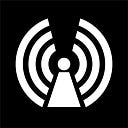As far as I'm concerned there are as many paths as there are people and no two paths are exactly the same. However --
1) to be able to meditate or pray one has to first act in a way that creates suitable environment for it. One must set one's life in order, so to speak, and therefore one practices Yamas (or dont's; niyamas then have more to do with subsequent steps).
2 ) Meditation is then observation and, indeed, males are "better" at it than females. Similarly, prayer is basically surrender or acceptance which is more a female domain (as compared to male).
3) During meditation or prayer insights arrive which always come form some kind of inquiry (contemplation of raw perception, self, Ishvara, Brahman, even death, etc.)
4) In turn, one must be able to accept these insights (or surrender to them), thus every meditator also practices prayer at least in a limited way. Similarly, deep prayer (or surrender) leads to meditative states (or trances) and subsequently insights (see point 3).
5) Finally one closes the cycle and applies the knowledge acquired to one's actions until eventually truth shines through.
Thus, even if one follows one specific path, in order to reach liberation one actually embraces all four directions in the end (in Yogic parlance in would be karma, raja, bhakti, and jnana). That each person has some predominant direction (or path) stems merely from their predispositions and peculiarities.
